Contents
Prepare yourself to become a skilled crossbow hunter with the help of A Crossbow Hunter’s Ed – Master the Art of Crossbow Hunting.
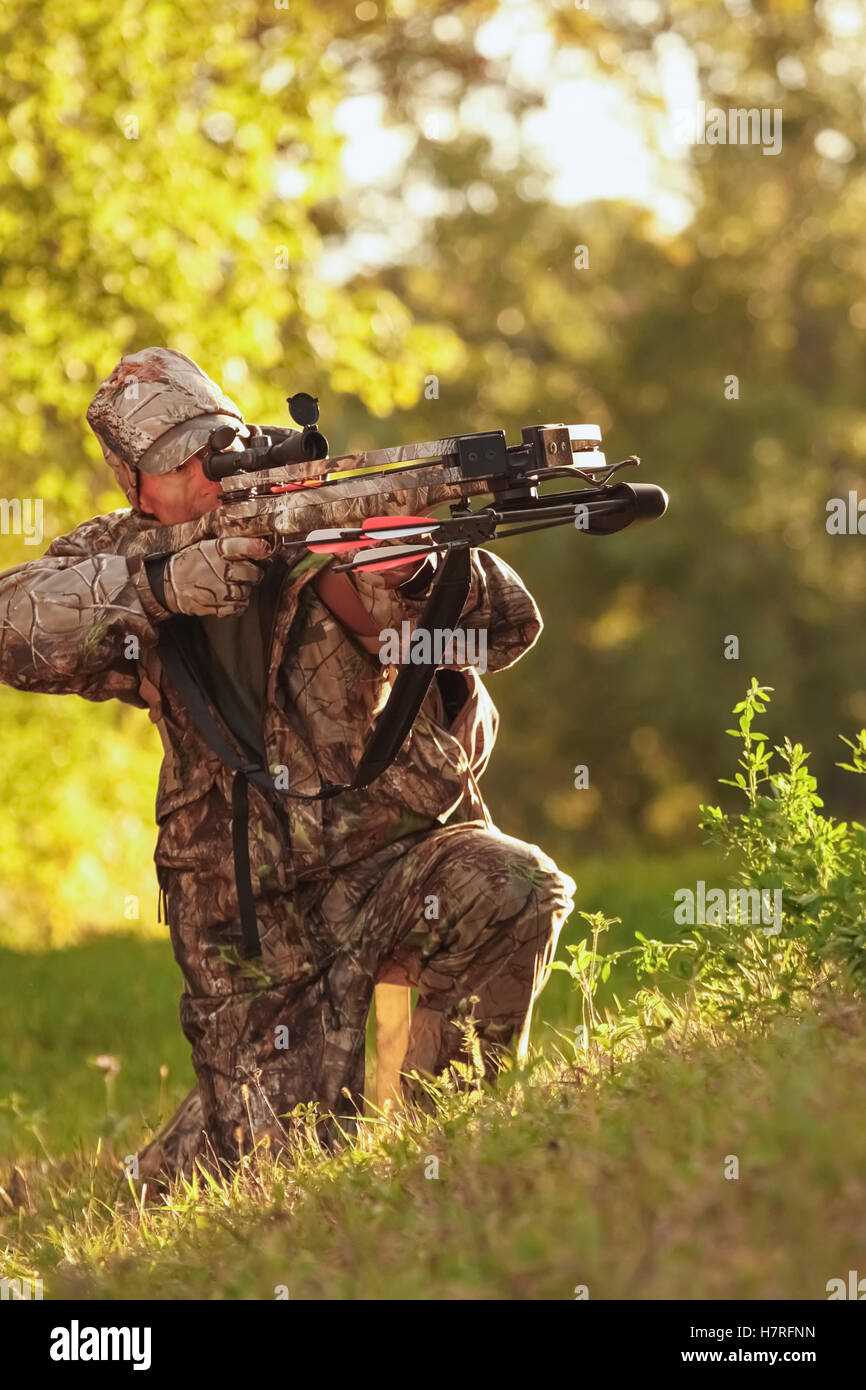
Welcome, hunters! Are you ready to embark on an exciting journey into the world of crossbow hunting? If you have always been fascinated by this ancient and noble art, then you have come to the right place. Crossbow hunting requires skill, precision, and a deep understanding of the environment. It’s not just about finding the perfect shot, but about immersing yourself in the wilderness and becoming one with nature. So, get ready to dive into the world of crossbow hunting and prepare for an unforgettable experience!
At Crossbow Hunter’s Ed, our goal is to equip you with the knowledge and skills you need to become a successful crossbow hunter. Whether you are a novice or an experienced hunter looking to enhance your skills, our comprehensive training program has got you covered. With a team of experienced instructors and a curriculum that covers everything from safety precautions to advanced shooting techniques, we will guide you every step of the way.
Why choose crossbow hunting, you may ask? Well, crossbow hunting offers a unique challenge that sets it apart from traditional bow hunting or firearms hunting. It requires a blend of physical strength, mental focus, and technical skill. As you draw back the string and release the bolt, there is a sense of both power and vulnerability. It’s a thrilling experience that pushes you to your limits and rewards you with a deep connection to the natural world. So, if you are ready to step outside your comfort zone and embrace the challenges of crossbow hunting, join us at Crossbow Hunter’s Ed!
Mastering Crossbow Basics
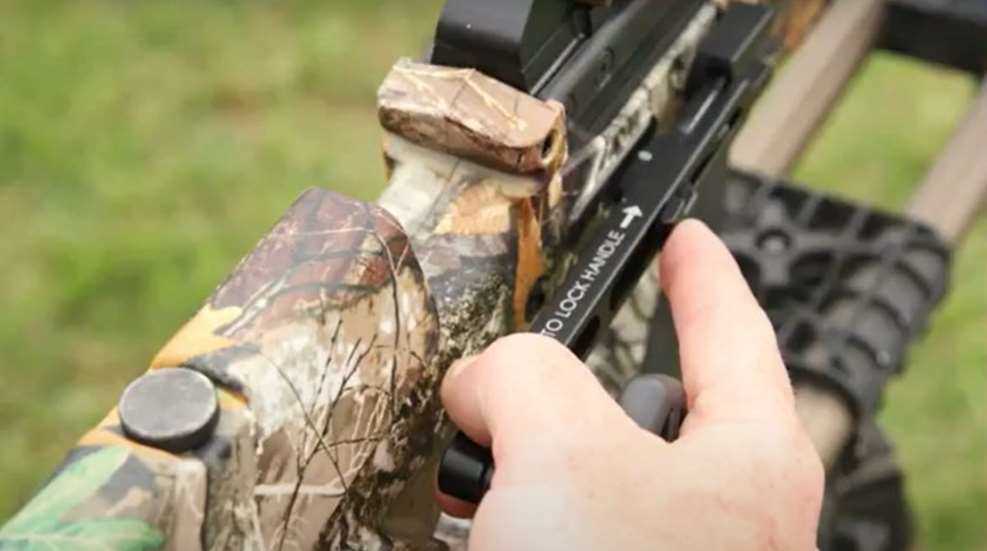
When it comes to becoming a skilled crossbow hunter, mastering the basics is essential. The crossbow, also known as a horizontal bow, is a powerful weapon that requires precision and skill to use effectively.
First and foremost, it’s important to understand the parts of a crossbow. The key components include the limbs, riser, stock, trigger mechanism, and scope. Each part plays a crucial role in the functionality of the crossbow, so it’s important to familiarize yourself with them.
Next, proper handling of a crossbow is vital for safety and accuracy. Always remember to keep your finger off the trigger until you’re ready to shoot, and never point the crossbow at anything you don’t intend to shoot. Additionally, it’s important to use proper form when shooting, keeping your shoulders relaxed and your stance stable.
Understanding how to aim and shoot a crossbow is another crucial skill to master. Using a scope can greatly improve your accuracy, but it’s important to practice using it in various lighting conditions and distances. Additionally, practicing proper breathing techniques and maintaining a steady aim can greatly improve your shot placement.
Finally, practice makes perfect when it comes to mastering crossbow basics. Regularly shooting at targets and practicing different shooting positions can help improve your skills and confidence. Additionally, taking a crossbow hunter’s education course can provide valuable knowledge and tips for mastering the art of crossbow hunting.
In conclusion, mastering the basics of crossbow hunting is essential for becoming a skilled and successful hunter. By understanding the parts of a crossbow, practicing proper handling and shooting techniques, and regularly practicing, you can become a master of the art of crossbow hunting.
Understanding Crossbow Components
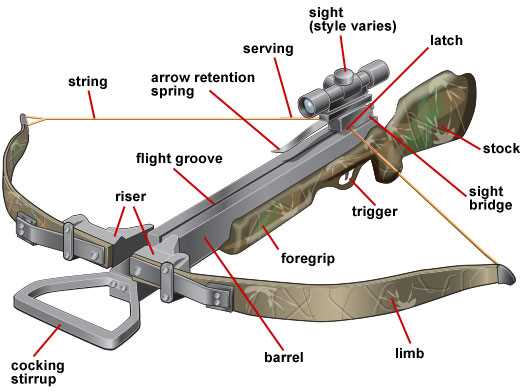
As crossbow hunters, it is important to have a thorough understanding of the different components of a crossbow. With this knowledge, hunters can make informed decisions about which crossbow is best suited for their needs and how to properly maintain and care for their equipment.
One of the key components of a crossbow is the stock. The stock is the main body of the crossbow and is typically made from materials such as wood, aluminum, or synthetic materials. It provides stability and support for the rest of the components.
Attached to the stock is the prod, also known as the bow or limb. This is the part of the crossbow that stores and releases the energy to propel the arrow forward. Prods can be made from various materials, such as fiberglass or carbon composite, and come in different draw weights to accommodate different hunting needs.
Another important component of a crossbow is the trigger mechanism. The trigger allows the hunter to release the arrow at the desired moment. It is essential for the trigger to be smooth and responsive to ensure accurate and consistent shots.
Cocking devices are often used to help hunters draw the string back into the firing position. This can be done manually, but the use of a cocking device reduces strain and makes cocking the crossbow easier and safer.
The crossbow scope is another essential component, as it helps hunters accurately aim at their target. The scope provides magnification and reticles to assist in judging distances and making precise shots.
Additionally, crossbows can have various accessories such as quivers for holding arrows, bipods or shooting sticks for stability, and noise-dampening devices to reduce the sound generated when shooting. These accessories can enhance the overall hunting experience and improve the hunter’s chances of a successful shot.
Understanding each component of a crossbow is crucial for any crossbow hunter. By familiarizing themselves with these components, hunters can make informed decisions about their equipment and maximize their hunting success.
Choosing the Right Crossbow
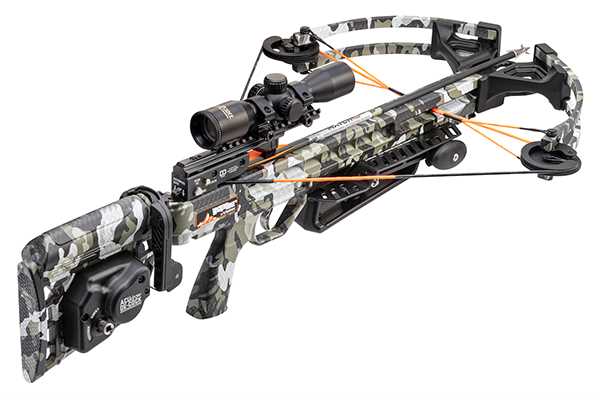
When it comes to crossbow hunting, one of the most important decisions you’ll make is choosing the right crossbow. The right crossbow can make a world of difference in your hunting experience, giving you the accuracy and power you need to take down your target with precision.
There are a few key factors to consider when selecting a crossbow. First and foremost, you’ll want to determine your own hunting style and preferences. Are you an experienced hunter looking for a high-performance crossbow, or are you a beginner looking for an entry-level model? Understanding your own needs and skill level will help you narrow down your options.
Next, consider the draw weight of the crossbow. The draw weight refers to the amount of force required to cock the crossbow. A higher draw weight will generally result in a more powerful shot, but it may also require more strength to handle. If you’re a beginner or have limited upper body strength, you may want to opt for a lower draw weight crossbow.
Another important factor to consider is the speed of the crossbow. The speed of a crossbow is measured in feet per second (fps), and it determines how quickly the arrow will travel to its target. Higher speed can improve your chances of a successful shot, but keep in mind that it may also result in a louder shot and more recoil. Consider your hunting environment and the distance at which you typically shoot when choosing the speed of your crossbow.
Finally, budget is always a consideration. Crossbows can range in price from a few hundred dollars to well over a thousand. It’s important to find a crossbow that fits within your budget while still meeting your needs in terms of performance and quality.
When it comes to choosing the right crossbow, taking the time to do your research and evaluate your own needs is crucial. Keep these factors in mind, and you’ll be well on your way to finding the perfect crossbow for your hunting adventures.
Essential Crossbow Hunting Gear

When it comes to crossbow hunting, having the right gear is essential for a successful and enjoyable experience. Here are some must-have items for any crossbow hunter.
1. Crossbow: Of course, the most important piece of gear for a crossbow hunter is the crossbow itself. Make sure to choose a crossbow that is suited to your skill level and hunting needs.
2. Bolts: Also known as arrows, bolts are the projectiles used with a crossbow. It’s important to have a good supply of bolts and to choose the right ones for your crossbow’s specifications.
3. Broadheads: Broadheads are the tips of the bolts and are used for taking down game. There are different types of broadheads available, including fixed blade and mechanical options.
4. Cocking Device: A cocking device is an essential tool for crossbow hunters, as it helps to pull back the string and cock the crossbow. This makes it easier to load and shoot.
5. Optics: Having good optics, such as a scope or red dot sight, can greatly improve your accuracy and range while hunting with a crossbow. It’s important to choose optics that are compatible with your crossbow.
6. Hunting Clothes: Investing in hunting clothes that are camouflaged and scent-resistant is important for staying concealed from game while crossbow hunting. This includes pants, shirts, jackets, and headwear.
7. Safety Equipment: Safety should always be a top priority when crossbow hunting. Essential safety gear includes a quality safety harness, gloves, and protective eyewear.
8. Scent Control Products: Animals have a keen sense of smell, so using scent control products can help mask your scent and increase your chances of staying undetected while hunting.
9. Backpack: A good backpack is essential for carrying all your necessary gear, such as extra bolts, snacks, water, and any other items you may need while out in the field.
10. Game Calls: Game calls can be used to attract or communicate with game animals while crossbow hunting. It’s important to practice using game calls to make realistic sounds.
Remember, proper gear is essential for a successful crossbow hunting experience. Make sure to invest in high-quality gear and take the time to practice and become familiar with all your equipment before heading out into the field.
Optics for Improved Accuracy

One of the most important aspects of crossbow hunting is having the ability to accurately hit your target. To achieve this, crossbow hunters often rely on the use of optics. Optics can greatly improve your accuracy by providing a clear and magnified view of your target, allowing for better aim and shot placement.
There are several types of optics that are commonly used by crossbow hunters, including scopes, red dot sights, and holographic sights. Each type has its own advantages and disadvantages, so it’s important to choose the one that best suits your hunting style and preferences.
Scopes are a popular choice for crossbow hunting because they offer high magnification and a wide field of view. They typically have adjustable reticles that are calibrated for specific distances, making it easier to estimate the range to your target. Some scopes even have illuminated reticles, which can be helpful in low-light conditions.
Red dot sights are another option for crossbow hunters. These sights project a small illuminated dot onto a window, which is then superimposed onto the target. Red dot sights are known for their simplicity and quick target acquisition, making them ideal for fast-paced hunting situations.
Holographic sights are similar to red dot sights, but they use a holographic projection instead of a simple dot. This allows for a more precise aiming point, especially at longer distances. Holographic sights are often used by more experienced crossbow hunters who require a higher level of accuracy.
Regardless of the type of optics you choose, it’s important to practice using them before heading out on a hunt. Familiarize yourself with the reticle or aiming point, and experiment with different magnifications and settings. By mastering the use of optics, you’ll greatly enhance your accuracy and increase your chances of a successful hunt.
| Optics Type | Advantages | Disadvantages |
|---|---|---|
| Scopes | High magnification, wide field of view, adjustable reticles | Can be bulky and heavy |
| Red Dot Sights | Quick target acquisition, simplicity | Might not work well in bright sunlight |
| Holographic Sights | Precise aiming point, suitable for long distances | Expensive |
The Right Arrows for Your Crossbow
When it comes to crossbow hunting, choosing the right arrows can make all the difference. The arrows, also known as bolts, are an essential part of your setup and can greatly affect the accuracy and performance of your crossbow.
First and foremost, make sure you select arrows that are specifically designed for a crossbow. Crossbow arrows are shorter and stiffer compared to arrows used in traditional archery. They are specially designed to withstand the high-speed and high-force impact of a crossbow.
Another important consideration is the weight of the arrows. Different crossbows have different draw weights, so you need to match the weight of the arrow to the specifications of your crossbow. Using arrows that are too light can cause the bow to over-accelerate, which can result in decreased accuracy and damage to your equipment. On the other hand, using arrows that are too heavy can put unnecessary strain on your crossbow and decrease its overall performance.
When it comes to arrow materials, carbon arrows are a popular choice for crossbow hunting. Carbon arrows are lightweight, durable, and have excellent straightness, which translates to improved accuracy. Make sure to choose arrows that have the right spine stiffness for your crossbow, as this can also affect accuracy.
Lastly, don’t forget to consider the type of broadheads you will be using with your arrows. Broadheads are the tips of the arrows and come in various styles, including fixed blade and mechanical. Some broadheads are designed specifically for crossbows and offer better flight and penetration performance.
Overall, selecting the right arrows for your crossbow is crucial for a successful and ethical hunting experience. Take the time to research and choose arrows that are specifically designed for your crossbow and match the specifications of your setup. Remember, a well-matched arrow can ensure accurate shots and improve your overall hunting skills.
Skills and Techniques for Successful Crossbow Hunting
In order to become a successful crossbow hunter, it is important to develop the necessary skills and techniques. These will not only improve your aim and accuracy, but also increase your chances of a successful hunt. Here are some key skills and techniques that every crossbow hunter should master:
1. Patience: Hunting requires a great deal of patience. You may need to wait for long periods of time before getting a clear shot at your prey. It is important to remain calm and composed while waiting for the perfect opportunity.
2. Stealth: Crossbow hunters must be skilled at moving quietly and remaining undetected by their prey. Practice walking silently and staying low to the ground. Use trees and shrubs as cover to get closer to your target without being noticed.
3. Accuracy: Aiming and shooting accurately is crucial in crossbow hunting. Take the time to practice shooting from different distances and angles. Familiarize yourself with the trajectory of your crossbow and adjust your aim accordingly.
4. Knowledge of the Game: Understanding the behavior and habits of the game you are hunting is essential. Learn about your target’s diet, preferred habitats, and movement patterns. This knowledge will help you anticipate their actions and position yourself for a successful shot.
5. Safety: Safety should always be a top priority when crossbow hunting. Make sure to familiarize yourself with your crossbow and its safety features. Follow all local hunting laws and regulations. Always wear appropriate safety gear, such as a harness or vest, and never point your crossbow at anything you do not intend to shoot.
6. Adaptability: Hunting conditions can vary greatly. Crossbow hunters must be adaptable and able to adjust their techniques accordingly. Whether hunting in different terrains or different weather conditions, be prepared to modify your strategies and approach.
7. Practice: Lastly, regular practice is essential for mastering the art of crossbow hunting. Dedicate time to practice shooting and familiarize yourself with your equipment. The more you practice, the more confident and skilled you will become.
By developing and honing these skills and techniques, hunters can greatly increase their chances of success in crossbow hunting. Remember to always hunt responsibly and ethically, respecting both the animals and the environment.
Aiming and Shooting with Precision
When it comes to mastering the art of crossbow hunting, one of the most important skills to develop is aiming and shooting with precision. This is where a good crossbow hunter’s ed comes in handy.
Aiming with a crossbow is different from shooting with a firearm. Instead of relying on the sight of a scope or iron sights, crossbow hunters use a system of sights that are built into the crossbow itself. These sights often consist of multiple pins or dots that are used to align the crossbow with the target.
To aim accurately, it’s important to focus on maintaining a steady hand and a consistent stance. The crossbow should be held firmly against the shoulder, with the forearm parallel to the ground and the body positioned in a stable shooting position.
When aiming, it’s important to keep both eyes open and focus on the target. This allows for better depth perception and helps to maintain awareness of the surrounding environment. It’s also important to take into account factors such as wind speed and direction, as these can affect the trajectory of the bolt.
Once the crossbow is properly aimed, it’s time to pull the trigger. This should be done gently and smoothly, without jerking or flinching. It’s important to maintain focus on the target throughout the entire shooting process.
With practice and the right crossbow hunter’s ed, aiming and shooting with precision will become second nature. Remember to always prioritize safety and be aware of the rules and regulations regarding crossbow hunting in your area.
Tracking and Approaching Game Stealthily

One of the vital skills that every crossbow hunter needs to master is the art of tracking and approaching game stealthily. This skill is essential to increase your chances of successfully getting close to your target and making a precise shot.
The first step in tracking game is to carefully study the tracks and signs left by the animals. Pay close attention to the size, shape, and depth of the tracks, as well as any droppings or other markers. This will give you valuable information about the direction the animal is heading and its behavior patterns.
Once you have identified the tracks, it’s time to start following the trail. Move slowly and cautiously, being mindful of your surroundings. Try to walk in a way that minimizes noise and disturbance, as animals have sharp senses and can be easily spooked.
Another important aspect of approaching game silently is to utilize the natural cover and terrain to your advantage. Use trees, rocks, and bushes to conceal your movements and blend in with your surroundings. This will help you get closer to the animals without alarming them.
Remember to use all your senses while tracking and approaching game. Listen for any sounds or calls that the animals might be making and be observant of any changes in their behavior. This will give you valuable clues about their proximity and alertness level.
Lastly, it’s important to approach the game from downwind whenever possible. Animals have a keen sense of smell, and if they catch your scent, they are likely to flee before you even get close enough for a shot. By staying downwind, you can reduce the chances of being detected and increase your chances of a successful hunt.
In conclusion, tracking and approaching game stealthily is a crucial skill for crossbow hunters. By mastering this art, you can increase your chances of getting close to your target and making an accurate shot. Remember to study the tracks, move slowly and quietly, utilize natural cover, use all your senses, and approach from downwind. Good luck on your hunting adventures!
Field Dressing and Butchering Game

Field dressing and butchering game is an important skill for hunters, especially those who use a crossbow. Properly handling and processing your game not only ensures the safety of the meat, but also allows you to make the most use of the animal.
Here are some steps to follow when field dressing and butchering game:
- Prepare your workspace: Set up a clean and organized area with all the necessary tools, such as a sharp knife, plastic bags, and a cutting board.
- Start with field dressing: After harvesting an animal, it’s important to field dress it as soon as possible. This involves removing the internal organs to prevent spoilage and contamination. Make an incision between the hind legs and carefully open the body cavity. Remove the organs, being careful not to puncture them.
- Remove the hide: If desired, you can also remove the animal’s hide at this point. This can be done by making incisions along the legs and carefully peeling the hide away from the carcass.
- Butchering the meat: Once the animal is field dressed and the hide is removed, it’s time to start butchering the meat. There are various cuts and techniques to use, depending on the type of game and your personal preferences.
- Package and store: After butchering, package the meat in plastic bags or vacuum-sealed bags, making sure to label them with the date and type of meat. Store the meat in a cool place, such as a refrigerator or freezer, to prevent spoilage.
Proper field dressing and butchering not only improves the quality and taste of the meat, but also ensures that you are making the most ethical use of the animal you harvested. Take the time to learn and practice these skills to become a proficient crossbow hunter.
Mastering Crossbow Safety

Crossbow hunting can be an exhilarating and rewarding experience, but it’s crucial to prioritize safety at all times. The powerful nature of a crossbow demands strict adherence to safety protocols to prevent accidents and injuries.
First and foremost, it’s vital to educate yourself through a crossbow hunter’s ed program. This educational resource will provide you with comprehensive knowledge about the proper handling and use of a crossbow, as well as the ethical and legal aspects of crossbow hunting.
One of the most critical aspects of crossbow safety is always treating your weapon as if it’s loaded. Never assume that a crossbow is empty, even if you believe you unloaded it. Before handling your crossbow, verify that it is indeed unloaded by checking the chamber and ensuring there is no arrow or bolt present.
Another fundamental principle of crossbow safety is to always keep your finger off the trigger until you are ready to shoot. Accidentally pulling the trigger can have catastrophic consequences, so it’s crucial to exercise caution and control at all times. Only place your finger on the trigger when you have a clear shot and are fully prepared to release the bolt.
Proper storage and transportation of your crossbow is another vital aspect of safety. When not in use, always keep your crossbow in its case or a secure location away from children and unauthorized individuals. Additionally, make sure to unload your crossbow before storing it, and never transport a loaded crossbow in a vehicle.
Lastly, when practicing with your crossbow, always ensure you have a safe and secure shooting range. Make sure there are no obstructions or people in the vicinity of your target, and always have a designated safe shooting zone. Use a backstop or target that can safely stop your bolts, minimizing the risk of accidental injuries or property damage.
By mastering crossbow safety, you can enjoy the art of crossbow hunting while minimizing the risks and ensuring a safe and enjoyable experience for yourself and others. Remember, safety should always be your top priority when using a crossbow.
Proper Crossbow Handling and Storage

As a crossbow hunter, it is essential to understand the correct way to handle and store your equipment. Improper handling and storage can lead to accidents, damage to the crossbow, and even injury to yourself or others. Follow these tips to ensure the proper handling and storage of your crossbow:
- Always keep the crossbow pointed in a safe direction: Whether you are carrying your crossbow or preparing to shoot, make sure it is pointed away from any people or animals. Treat your crossbow as if it is loaded at all times and never point it at something you don’t intend to shoot.
- Keep your finger off the trigger until ready to shoot: Keep your finger outside the trigger guard until you have a clear target and are ready to shoot. This will help prevent accidental discharge of the crossbow.
- Store your crossbow securely: When not in use, store your crossbow in a safe and secure location. Consider using a locked cabinet or case to prevent unauthorized access to your crossbow. This also helps protect your crossbow from damage.
- Inspect your crossbow regularly: Before each use, inspect your crossbow for any signs of wear or damage. Check the strings, cables, and limbs for any fraying, cracking, or other issues. Replace any worn or damaged parts immediately to ensure the safe operation of your crossbow.
- Follow manufacturer’s instructions: Read and understand the instructions provided by the crossbow manufacturer. They will provide specific guidance on how to properly handle and store your crossbow, as well as maintenance and safety tips.
- Take a crossbow hunter’s education course: It is highly recommended that all crossbow hunters take a hunter’s education course. These courses provide comprehensive training on crossbow safety, handling, and hunting techniques. They are a valuable resource for both new and experienced hunters.
By following these tips and practicing proper crossbow handling and storage, you can ensure a safe and enjoyable crossbow hunting experience. Take the time to educate yourself and always prioritize safety.
Understanding Hunting Regulations and Ethics
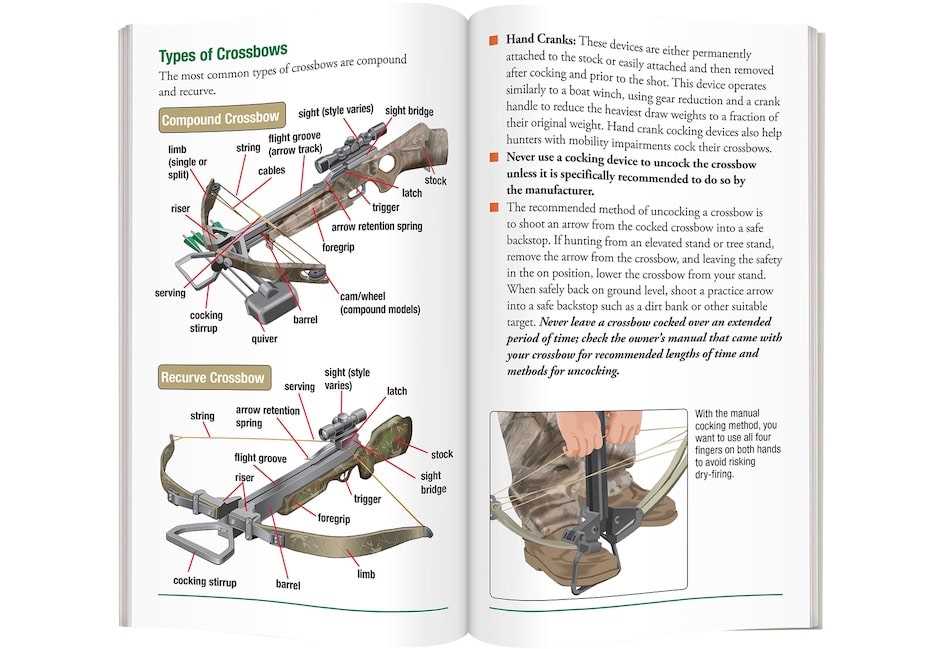
When it comes to crossbow hunting, it is important to have a thorough understanding of the hunting regulations and ethics that govern the sport. These regulations help ensure the safety of both hunters and wildlife, as well as promote fair and sustainable hunting practices.
First and foremost, it’s crucial for every crossbow hunter to educate themselves on the specific hunting regulations in their area. Hunting regulations can vary from state to state and even from season to season, so it’s important to stay up to date on any changes or restrictions that may apply. This information can usually be found in the hunting regulations guide provided by the local wildlife agency or department.
Some common regulations that may apply to crossbow hunting include restrictions on hunting seasons, bag limits, and specific hunting areas. It’s important to know when and where it is legal to use a crossbow for hunting, as well as how many animals you are allowed to harvest. Violating these regulations can result in penalties and loss of hunting privileges, so it’s crucial to adhere to them.
Aside from the legal aspects, ethical hunting practices should also be considered. Ethical hunting involves respecting the wildlife and the environment, as well as ensuring a clean and humane kill. This means taking responsible shots within your effective range and aiming for vital organs, such as the heart or lungs, to ensure a quick and humane kill.
Furthermore, ethical hunters always follow proper game retrieval procedures and make an effort to utilize as much of the animal as possible. This may include field dressing the animal and donating its meat to those in need. By practicing ethical hunting, crossbow hunters can help maintain a positive image of hunting in the public eye and contribute to conservation efforts.
In conclusion, understanding and abiding by hunting regulations and ethics is essential for every crossbow hunter. By educating yourself on the specific hunting regulations in your area and practicing ethical hunting techniques, you can contribute to the conservation of wildlife and ensure a safe and enjoyable hunting experience for all.

A skilled hunter, dedicated conservationist, and advocate for ethical practices. Respected in the hunting community, he balances human activity with environmental preservation.
